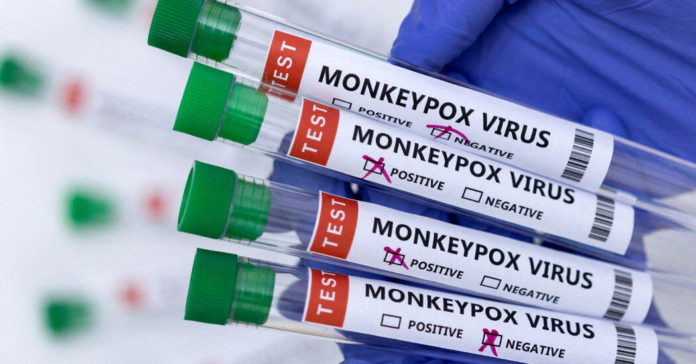
Monkeypox infections are spreading rapidly in many countries, and the United States has, yet again, been caught flat-footed when confronted with another virus. Many problems with the Covid-19 response by the United States are being repeated: limited access to testing, contact tracing, vaccination and isolation support, and scant data from public health officials about how and where people are being infected. With infections currently concentrated among men who have sex with men, monkeypox has also exposed another critical vulnerability in the U.S. public health system: limited sexual health services in many parts of the country. That will make it more difficult to know how many monkeypox cases there are and to stop the virus from spreading.
The general public needs to demand that elected officials recognize the urgency of having a strong national strategy and budget focused on sexual health. By making sexual health a routine part of wellness and by funding it sufficiently, we can lower the barrier to essential services and protect everyone from emerging health threats, such as monkeypox.
Monkeypox is caused by a virus similar to smallpox, and many outbreaks were thought to begin with human contact with infected animals in central and western African countries. The virus often causes several days of flulike symptoms, followed by a skin rash.
Since May 2022, monkeypox cases have been reported in many states in the United States and in Europe, primarily associated with men who have sex with men. Public health investigations strongly suggest that infections are spreading during sexual contact, likely from an uninfected person’s skin touching an infected person’s skin in the genital or anal areas. While there is some debate among epidemiologists about whether to call monkeypox “sexually transmitted” versus “sexually transmissible,” it is reasonable to consider that sex is one activity that transmits infection, similar to other infections that are transmitted by skin-to-skin contact during sex, like herpes, syphilis and the human papillomavirus. While no deaths have been reported in the United States, more widespread infections will result in some people experiencing severe complications, such as damage to the brain, eyes and lungs. Infections may also be more severe in people with H.I.V., which is more common in men who have sex with men in the United States.
Many cases of monkeypox during the recent outbreak in Europe and the United States have been detected at clinics dedicated to treatment of sexually transmitted infections. But there are reasons to believe the United States is missing many more cases than have been reported. The Centers for Disease Control and Prevention has said that it does not know how some U.S. patients acquired the virus, suggesting that there are likely people spreading infection not yet diagnosed. The C.D.C. has also reported at least two different variants of monkeypox in the United States, suggesting more than one outbreak at the same time. And my personal experience has shown that young men who have sex with men are likely being misdiagnosed when they go to emergency departments.
Why are cases being missed? One reason is that the United States lacks a sufficient number of clinics that specialize in sexual health, including family planning, sexual dysfunction, gender-affirming services, and S.T.I.s. Historically, most of these clinics have been affiliated with local health departments with public funding.
The clinics have several advantages over primary care or urgent care centers. Patients often perceive them as more welcoming, because they can ensure anonymity, have staff members well versed in gay men’s health, often charge no or minimal out-of-pocket fees and may provide rapid screening options and vaccines particularly important to sexually active teens and adults. They also have clinicians who have expertise in accurately differentiating one S.T.I. infection from another and providing treatment to patients and their exposed sex partners. Widespread availability of sexual health clinics lowers the barrier for people to get screened, seek care for any symptoms and get vaccines when available.
Controlling epidemics of S.T.I.s depends on prompt diagnosis and effective treatment of infected people and their contacts. Yet government funding for diagnosis, treatment and contact tracing has been declining. In the 2010s, many health departments reduced hours at sexual health clinics, and prevention programs were further disrupted starting in 2020 because of Covid-19. In part because of these reduced health services, S.T.I.s have been rising for years, and the C.D.C. estimated that, on any given day in 2018, one in five Americans had one of these infections. Rates are particularly high in people 15 to 24 years old and men who have sex with men.
Other experts and I fear that monkeypox will exploit this vulnerability and become a permanently entrenched S.T.I. in the United States, as has happened with syphilis and H.I.V. Initial skin changes in this outbreak often appear innocuous and can occur in locations that are easy to miss, such as inside the anus. Nevertheless, these lesions are highly contagious and can even contaminate surfaces or materials such as towels, which can spread infection to other people. The skin changes can also mimic those of other infections, such as herpes, molluscum or syphilis, so monkeypox can be easily misdiagnosed by someone not expert in evaluating S.T.I.s.
As we know from other S.T.I.s, patients who have genital or anal symptoms that they believe are associated with sex may be reluctant to see a primary care physician in part out of fear that their diagnosis will be documented in their medical record and jeopardize their health insurance (if they have insurance). The current absence of easily accessible clinics that offer monkeypox testing will make it more likely that infections will go undiagnosed early and continue to spread. And the dynamics of some sexual networks among men who have sex with men — in which men with multiple sexual partners have sex with men who also have multiple partners — are likely to contribute to ongoing monkeypox transmission in this population.
Federal and state governments should immediately begin large-scale campaigns to educate health care providers of all types about monkeypox. Public health officials cannot assume that doctors will simply know when to test for it and how to navigate the process of swabbing a skin lesion and getting it to a specialized lab.
Public health agencies need to dramatically increase collaborations with community groups and hookup apps, party promoters and travel companies that specialize in gay, bisexual and other men who have sex with men to promote self-screening for skin changes. Some gay men are quite comfortable taking and sharing photos of their penis and anus while flirting; encourage them to do it for their health as well. The federal government also should authorize state health departments to use unspent Covid-19 funds to support S.T.I. supplies, equipment and staff for expanded hours and outreach at sexual health clinics, as well as contact tracing and support for isolating infected persons.
Monkeypox is unlikely to affect as many Americans as Covid-19. Nevertheless, an important lesson of the past decade of Covid-19, Ebola and Zika epidemics is that unchecked transmission means a virus will not stay limited to any one subset of the population and will lead to unpredictable health complications. Strengthening sexual health services now can serve the dual purpose of stemming the monkeypox outbreak and the ongoing one of S.T.I.s.
Jay Varma is a professor at Weill Cornell Medical School. He is an epidemiologist focused on large-scale responses to infectious diseases.
The Times is committed to publishing a diversity of letters to the editor. We’d like to hear what you think about this or any of our articles. Here are some tips. And here’s our email: letters@nytimes.com.
Follow The New York Times Opinion section on Facebook, Twitter (@NYTopinion) and Instagram.








